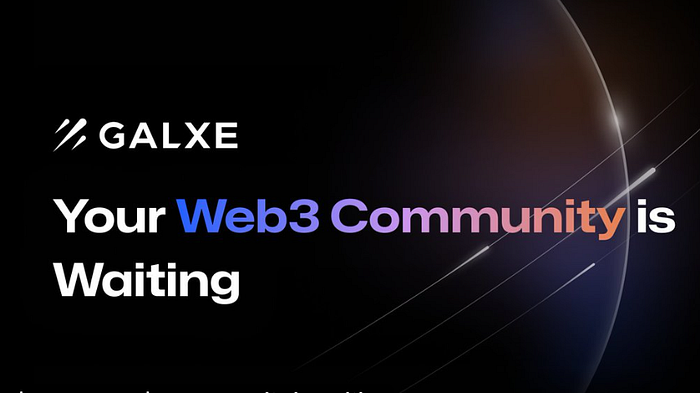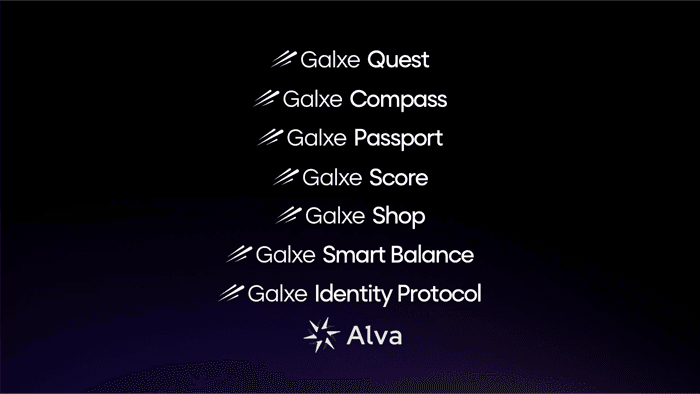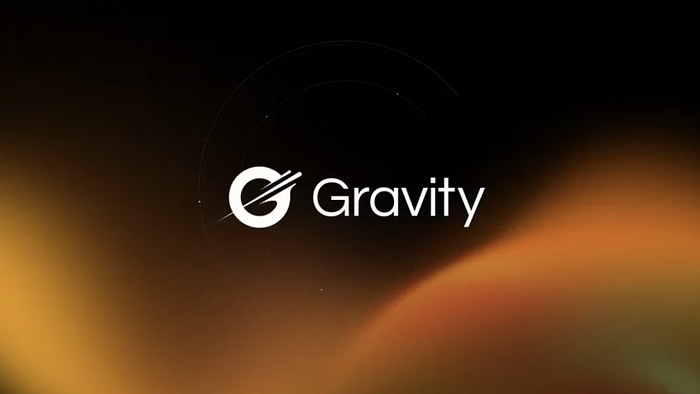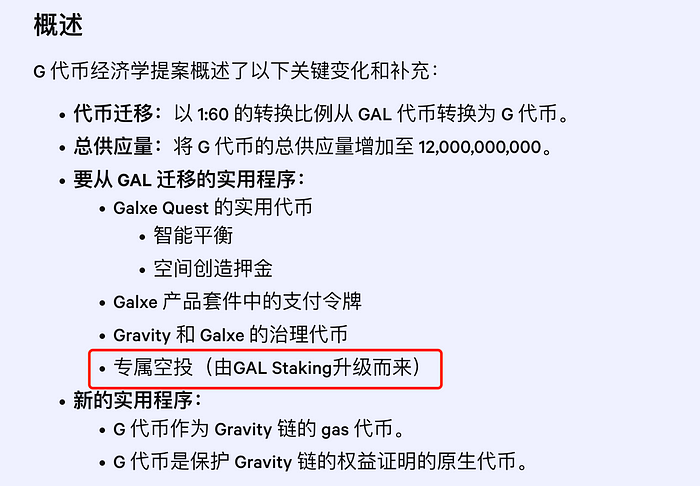A few days ago, I saw the well-known Web3 task platform Galxe preparing to design a Layer1 blockchain Gravity with a complete chain abstraction. At that time, I felt that it was very necessary for Galxe to launch a public chain, and the probability of doing so was quite high.
Why do I say that?
I. Current Pain Points of Web3
First, let's talk about the background. Galxe, as a task platform, has been running for about two to three years, raised over 10 million US dollars, and has been widely recognized. Before the token issuance, many people participated in interactive tasks on the platform and later received millions of airdrops. Many of the current airdrop influencers and users started paying attention to the Galxe platform at that time.
Now, many newcomers to the industry ask me why there are so many tasks on Galxe and what the points are used for. Why are many DApps not recognized?

So, the current pain points have emerged. Users engage in a lot of interaction but do not know why they are doing it, and they cannot see results in the short term. Many projects listed on the platform do not recognize Galxe platform users. These DApps are distributed across various chains, and new users need to prepare gas fees for different chains, with each chain setting barriers for users, increasing the entry threshold for users.
Now, with various L1, L2, L3, various infrastructure, and modular DApps flooding the market, they are all on different chains. For new users, this is a very high threshold; for old users, it is a very wasteful use of funds. For example:
- On the ETH network, you need to prepare ETH as gas,
- On SOL, you need to prepare $SOL as gas,
- On Polygon, you need to prepare $matic as gas,
- On AVAX, you need to prepare $avax as gas,
- On Sui, you need to prepare $sui as gas,
- On BTC, you need to prepare $btc as gas,
There are many more examples.
Too many fragmented modules have led to more dispersed liquidity, applications, and users, not only bringing overly complex situations to users but also making it very difficult for developers. If they choose a single chain, they are actually locking themselves into a niche market.
Is there a platform that can integrate various DApps like a portal website and allow users to prepare only one type of gas fee with a single account to access all DApps? Users do not need to worry about how the backend switches between different public chains; they just need to click a few buttons to have unimpeded access?
This is where chain abstraction comes in.
II. About Chain Abstraction
Similar to the Olympic spirit of "faster, higher, stronger," the capital market also pursues its own spirit of "faster, cheaper, more innovative." Whichever solution is better than the previous one, capital will flow in that direction, and the game rules will be formed there, allowing some to profit.
In recent years, we have encountered too many solutions, each one being cheaper and more innovative than the last, such as the infrastructure favored by capital:
- When L1 cannot expand, the industry creates Rollup;
- When Rollup divides liquidity, the industry creates cross-chain bridges;
- When there are too many cross-chain bridges, the industry aggregates them all;
- When there are too many aggregators, the industry builds Intents (the concept of chain abstraction mentioned in the article "Collaborate with Paradigm" released by Paradigm last year);
- When Intents are not clear, the industry creates an intent interpretation layer (subdivisions of chain abstraction);
Each iteration mentioned above has made a group of project parties, VCs, secondary markets, and speculators rich.
Why does every iteration of web3 make speculators rich?
Because blockchain needs users. Without users, what's the point of these iterations? Without users, who will provide abstraction?
(I) What is Chain Abstraction?
Chain abstraction is the use of universal smart contracts to solve cross-chain communication, asset transfer, and cross-chain smart contract invocation interpretability issues between different chains.
In plain language:
Chain abstraction means that users are unaware of the various facilities and chains at the underlying level. Users only need to interact with DApps by clicking, without needing to know about the existence of chains. This is chain abstraction. It eliminates all barriers for users, allowing them to simply act as users.
Our current blockchain has a very high threshold, much like the early days of the internet, where players needed to input various commands to access, and later had to remember various URLs. Later, navigation websites solved this problem.
Web3 will also develop in this direction, with on-chain interactions becoming simpler and simpler, until users are unaware of the blockchain, not knowing they are using a blockchain at all.
When this happens, the industry will produce several unicorns, monopolizing the vast majority of on-chain user traffic, breaking the current competition between chains and DApps, and siphoning off the entire value dividend of the coin circle.
(II) Chain Abstraction Will Become the Ultimate Traffic Entry, Capturing the Entire Web3
Imagine this scenario: in the next year, a market-validated, absolutely secure user entry point appears, with an extremely simplified on-chain interaction process that meets the vast majority of users' on-chain needs, without needing to purchase various procedures. Users can simply "click" when interacting. If such a window that completely hides the existence of the blockchain appears, wouldn't it be revolutionary?
This window will become the entry point for the vast majority of users to enter the on-chain world, becoming the entire blockchain's traffic entry. Wouldn't that have great potential?
If this happens, it means that the TVL battle, the competition between chains, and the share grab of DEX will lose their current significance, because users do not need to know what a DEX is or what a chain is. They only need to prepare a small platform fee to have unimpeded access. As for the cross-chain interactions behind the scenes, users have nothing to do with that, and they don't need to know about it. That's the platform's backend business, and the platform just needs to keep optimizing the backend.
Galxe's Layer1 blockchain Gravity is designed based on complete chain abstraction, doing exactly this, acting as a Web3 portal. Users only need to hold $G tokens as fees to have unimpeded access to all projects on the platform.
How does it achieve this? Can it reach this level?
III. About Galxe's Gravity
How does Galxe's Gravity become the portal of web3?
First, let's take a look at what Galxe does.

(I) About Galxe
Galxe is the task platform with the most users on web3 and the best interactive experience. Its product line and fluency rank among the top in six mainstream task platforms.
After about 3 years of development, it has 8 very mature product lines.

- The active addresses on-chain have reached: 21,924,209;
- Monthly on-chain activity: 2,807,115;

A total of 5,691 projects have launched 54,813 tasks on Galxe;
The network traffic of Galxe is larger than Uniswap, Opensea, or Etherscan, with over 1 million users visiting the Galxe website every day.

Galxe spans 34 different chains, more than any cross-chain bridge or integrated CEX. Before the launch of the chain abstraction mainnet, users can use Galxe's Smart Balance feature to deposit funds into a treasury and use the balance to pay gas fees for smart contracts on multiple chains without the need for bridging.
The only platforms currently able to achieve this level of traffic are Galxe, Coinbase, and TON.
It can be said that Galxe has the users and the technology to implement chain abstraction, and launching Gravity is the final piece of the puzzle.
(II) About Galxe's Chain Abstraction Platform Gravity
Galxe's launch of Gravity aims to integrate existing core products, solve the complexity of the current user base and blockchain, and provide an integrated, simple, and seamless web3 portal platform for its 20 million users and developers.
According to the official website, Gravity also simplifies multi-chain asset management, cross-chain transaction settlement, and user-friendly trading processes, allowing users to avoid dealing with complex underlying technologies.
In simple terms, users can use $G tokens as on-chain gas fees, enabling all platform operations without needing to understand blockchain technology.

Key Features of Gravity
- User Experience: Gravity uses chain abstraction wallets, allowing one account to access all public chains.
- Security: It will use a POS mechanism, staking the native token $G, and ensuring security through protocols like Babylon and EigenLayer.
- EVM Compatibility: It will be compatible with all EVMs.
- Technology: Gravity will integrate the fastest execution layer Reth and the AptosBFT consensus algorithm to increase throughput.
(III) Gravity Timeline
Gravity will be rolled out in two phases:
- Gravity Alpha Mainnet (Testnet): June 2024, supported by the Arbitrum Nitro technology stack, mainly for backend testing of cross-chain settlement.
- Gravity Mainnet: A staking-driven PoS Layer 1 blockchain, using Reth as its EVM execution engine.
(IV) About the Token
Galxe's previous token was $GAL, with a total supply of 200 million and a circulation rate of 57.76%.
After the launch of Gravity, $GAL will be converted to $G tokens, with an increase to 12 billion tokens. The exchange ratio between $GAL and $G tokens will be 1:60.
With the introduction of so many additional tokens, there will inevitably be a redistribution of tokens, presenting new opportunities.
(V) Our Opportunities on Galxe
Gravity will be launched in two phases and will dilute the token by 60 times, possibly to attract more users.
From the Galxe community, it is known that a portion of $G tokens will be used for airdrops, although the distribution mechanism is not yet known. It is likely that staking will be required to receive airdrops in the later stages.
During the testnet phase, the project is expected to distribute airdrops through point-based tasks, which is the best way to seize the market and lay the foundation.

Conclusion
The launch of the chain abstraction L1 blockchain Gravity by Galxe is very necessary and relatively easy to implement.
First, Galxe can integrate existing partners, allowing them to gain more users and help partners develop.
Second, the introduction of a new token, integrating existing product lines, provides a second dividend opportunity for the existing 20 million users.
Third, through chain abstraction, it eliminates many obstacles on the blockchain and leverages the advantages of the web3 portal to allow more newcomers to enter without barriers.
Chain abstraction has become a race for capital, and in the next year, the market will see a mature, market-validated, and absolutely secure user entry window like Galxe. Through the extreme simplification of on-chain interactions, it will meet the needs of the vast majority of users. This window will become the entry point for the vast majority of users to enter the blockchain and will also become the entire blockchain's traffic entry.
免责声明:本文章仅代表作者个人观点,不代表本平台的立场和观点。本文章仅供信息分享,不构成对任何人的任何投资建议。用户与作者之间的任何争议,与本平台无关。如网页中刊载的文章或图片涉及侵权,请提供相关的权利证明和身份证明发送邮件到support@aicoin.com,本平台相关工作人员将会进行核查。




